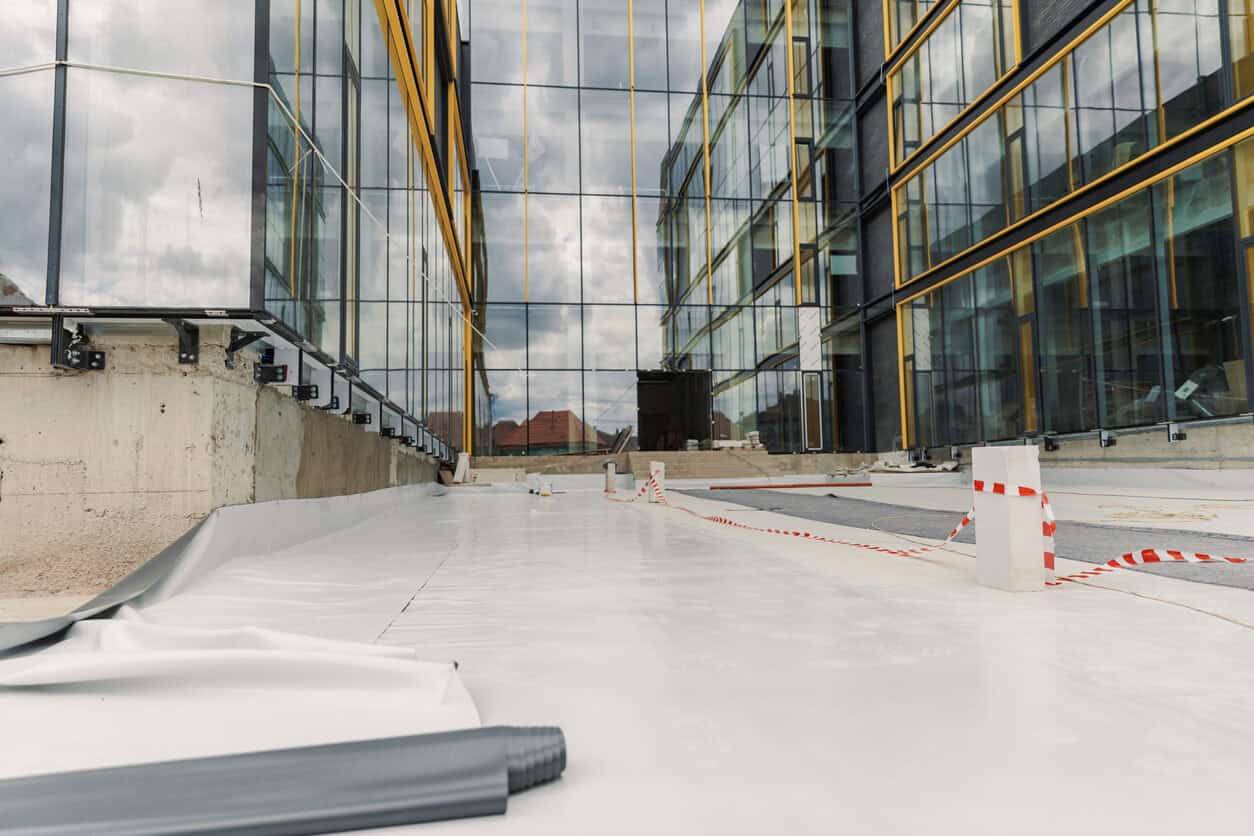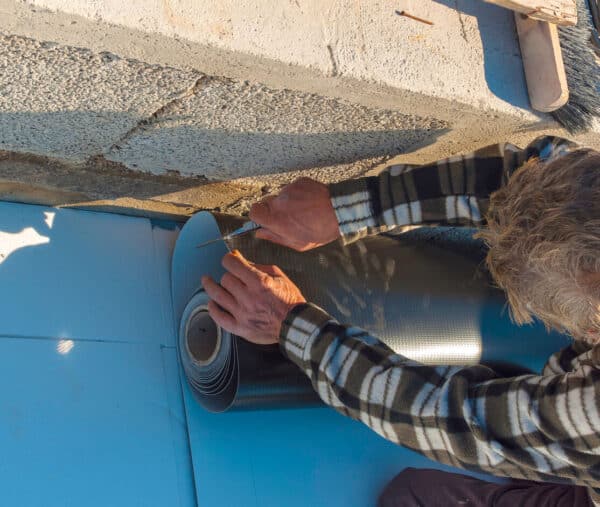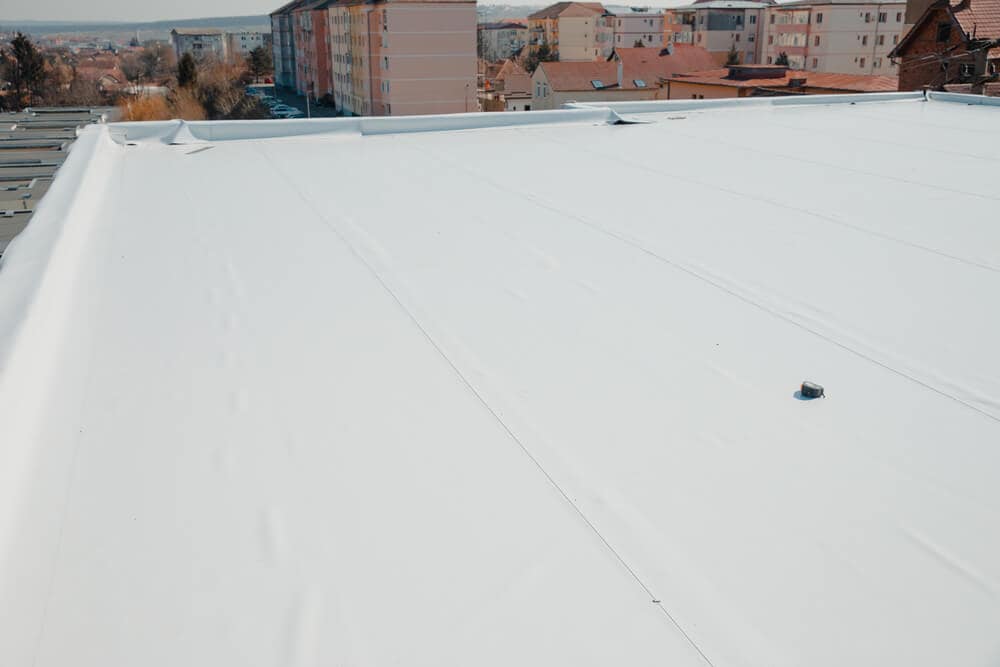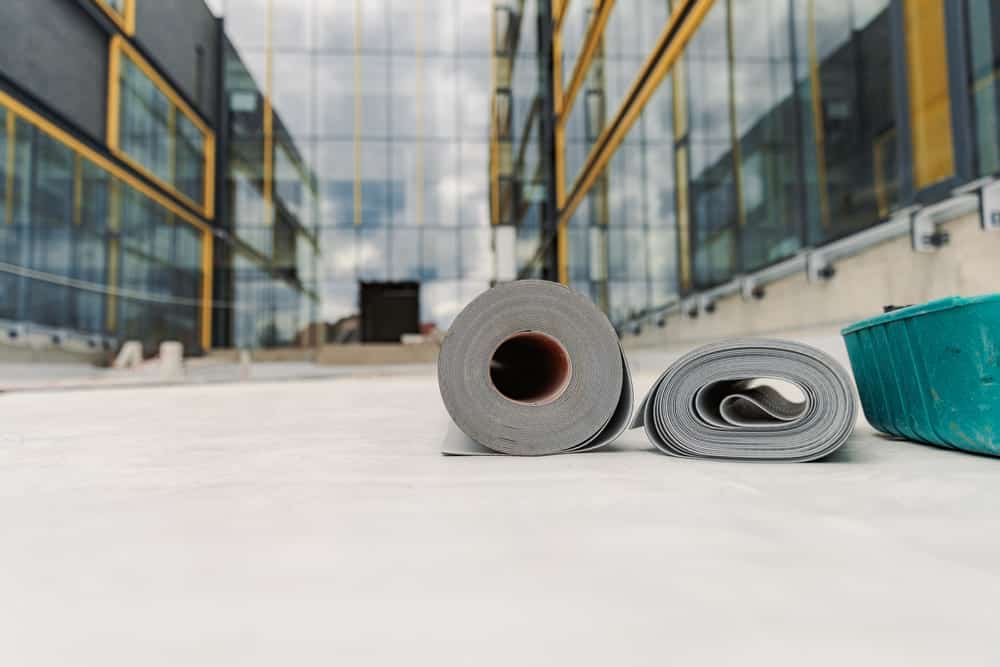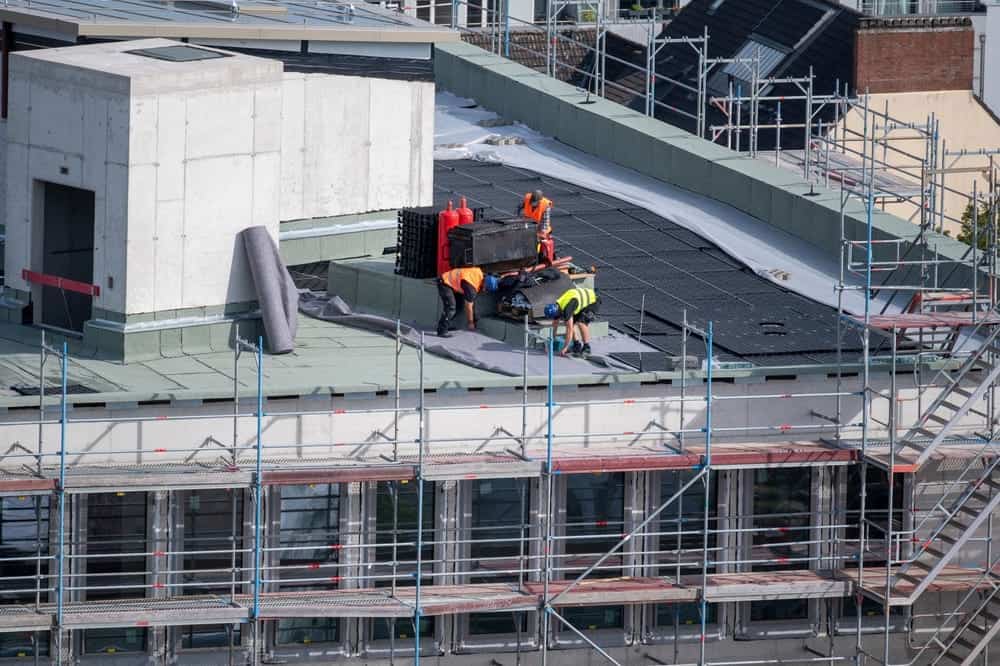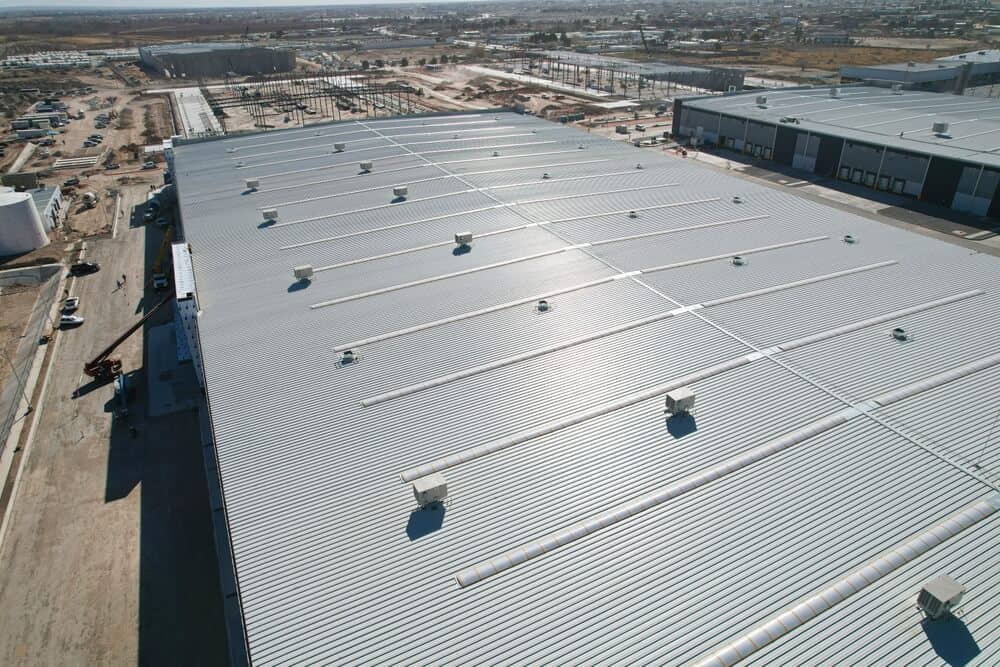Living in California can feel like you’re living the dream with its beautiful beaches, majestic mountains, and amazing cities.
But California weather isn’t always sunshine and gentle breezes. Scorching heatwaves sweep through valleys while dense fog covers the coasts, giving your roof a good beating. And when you toss in California’s strict commercial building code laws, investing in energy-efficient roofing for your commercial property is a necessity.
But with all the options out there, it can be hard to know which roofing option is the best for you. Let’s take a look at the types of energy-efficient roofing in California, why you need them, and how to choose the best type for your commercial property.
Contents
Types of Energy-Efficient Roofing for Commercial Properties
Energy-efficient roofing encompasses a wide variety of materials and technologies designed to improve insulation and reduce heat absorption. Which you choose often depends on the building’s design, the climate, and your specific energy efficiency goals. Five options are commonly used on commercial properties.
Cool Roofs
Cool roofs are one of the most well-known options. They’re typically made from materials such as:
- Reflective paint
- A sheet covering
- Highly reflective tiles and shingles
They can drastically lower temperature increases during hot weather, making them excellent for buildings with high sun exposure in California.
Metal Roofs
Metal roofing is constructed from materials such as:
- Aluminum
- Steel
- Copper
- Zinc
It’s an excellent energy-efficient option because it’s durable, low maintenance, and highly reflective if treated with the right coatings. It’s also resilient against extreme weather.
On top of that, it’s suitable for commercial buildings with sloped roofs and can last up to 50 years or more. That means you can save tons of money on energy costs and roof replacements in the long run.
Insulated Roof Panels
These panels provide a high level of heat resistance and are quick to install. This makes them perfect for making an existing building more energy efficient or meeting California energy codes from the get-go for new constructions.
Built-Up Roofs (BUR)
BURs are a traditional type of roofing that you’ll commonly see on commercial properties because of their durability and waterproofing capabilities. They consist of multiple layers of asphalt or coal tar and reinforcing fabrics that create a finished membrane. The surface often gets finished with a layer of gravel, a reflective coating, or a light-colored cap sheet for heat reflection that improves energy efficiency.
Alternative Roofing Options
Not looking to replace or build an entirely new roof? There are other roofing options you can choose from to boost your energy efficiency, including:
- Radiant barriers: These consist of a highly reflective material—usually aluminum foil—applied to one or both sides of a substrate material like cardboard, plastic films, or plywood sheathing.
- Reflective coatings: Reflective coatings are liquid or membranous materials applied over existing roofing surfaces to make them more reflective. They’re often made from polymers like acrylics, silicone, or polyurethane and contain reflective pigments. These coatings are a great cost-effective solution to enhance energy efficiency without replacing an entire roof.
7 Benefits of Energy-Efficient Roofing in California
Energy-efficient roofing offers several benefits for commercial properties in California, especially when you consider its unique and diverse climates, energy needs, and environmental goals. Here are seven reasons why it’s advantageous in the Golden State:
1. Reduced Cooling Costs
California is known for its warm, sunny climate, especially in the Central Valley and southern regions. Energy-efficient roofing materials reflect more sunlight and absorb less heat than standard roofs. This significantly reduces cooling costs in commercial buildings during hot months.
2. Energy Savings
Anyone who lives in California knows that the electricity rates are high. Reducing energy use for cooling can lead to significant savings. Since energy-efficient roofs reduce the demand on your air conditioning systems, they can lower your electricity bill substantially.
3. Enhanced Comfort
Energy-efficient roofing helps maintain more consistent indoor temperatures, reducing reliance on air conditioning. Working spaces are more comfortable as a result, especially during those all-too-common heatwaves.
4. Improved Roof Longevity
Traditional roofing materials tend to absorb UV rays. They go through thermal cycling as a result—the process where they repeatedly expand and contract due to fluctuating temperatures. This leads to wear and tear and reduces the lifespan of your roof.
On the flip side, energy-efficient roofing materials often have a longer lifespan than traditional roofing materials because they reflect UV rays instead of absorbing them, reducing thermal cycling.
5. Environmentally Friendly
The urban heat island effect is significant in densely populated areas like Southern and Western California. By reducing energy consumption, energy-efficient roofing decreases this effect and lowers greenhouse gas emissions.
6. Regulatory Compliance
California’s building codes such as Title 24, Part 6 require new and renovated roofs to meet strict energy efficiency standards. Choosing energy-efficient roofing helps you comply with these regulations and avoid potential penalties.
7. Rebates and Incentives
California offers multiple rebates and incentives for energy-efficient improvements, including roofing. These can help offset the initial investment of installing energy-efficient roofing materials.
How to Choose the Right Energy-Efficient Roofing for You
It’s plain to see that energy-efficient roofing is non-negotiable for commercial properties in California. So how do you choose from all the different options? Making an informed decision involves several steps depending on your city’s climate.
Evaluate Your Climate Zone
First, you need to understand your local climate. California’s energy code divides the state into different climate zones. You should identify your zone so you can understand which roofing options will perform best in your local conditions.
You should also consider local weather patterns. Several factors will influence your choice, such as:
- Sunshine
- Rainfall
- Temperature extremes
Examine Your Current Roof’s Condition
Next, inspect your existing roof to determine the age, condition, and current material. This will help you understand whether you need a complete replacement or if modifications like a reflective coating can make it more energy-efficient.
Furthermore, your roof’s weight capacity and slope may limit your options.
Set Your Energy Efficiency Goals
Your energy objectives will also guide your choice. Are you looking to reduce cooling costs or be more sustainable? Maybe you’re just trying to comply with California’s Title 24 energy efficiency standards. These considerations can help you narrow down your options.
And here’s a pro tip: Use tools like the Cool Roof Calculator from the Department of Energy to estimate how different roofing options can affect your energy bills.
Look at Lifecycle Costs and Benefits
While some energy-efficient roofing options may have higher upfront costs, they can have significant long-term savings on energy bills and maintenance. So evaluate each option’s lifespan and maintenance requirements. Some materials, like metal roofs, offer longer lifespans with minimal upkeep.
Choose a Reputable Roofing Company
Selecting the right roofing contractor is just as important as choosing the right roofing material for your commercial property. A reputable roofing company can ensure high-quality installation, fast and effective communication, and solid warranties. Here’s how you can find a reliable roofing contractor:
- Look for proven experience and expertise in installing energy-efficient roofing systems.
- Make sure they have experience in the local climate and meeting California’s building codes.
- Check for licensure to operate in California, liability insurance, and workers’ compensation.
- Read online reviews and testimonials to find out about their work.
- Get multiple quotes from several companies, getting a detailed breakdown of what’s included in each quote and the quality of materials used.
- Pay attention to how promptly and clearly each company communicates, making sure they’re willing to answer all your questions, provide detailed estimates, and keep you informed throughout the process.
- Look for companies that offer warranties on both materials and workmanship.
By taking your time to do your homework, you can select a trustworthy contractor who understands your needs, respects your budget, builds a long-lasting roof, and meets California’s energy efficiency standards.
Once you’ve chosen your contractor, it’s time to install your roof. Roofing projects can disrupt your operations, so plan the installation during a slow period when it’ll least affect your business.
Get High-Quality Energy-Efficient Roofing with AAA Roofing
Embracing energy-efficient roofing in California helps you build a more sustainable and cost-effective commercial property. With the right materials and a trusted partner, you can protect your building from California’s varied climates, stick to strict building codes, and significantly reduce your energy bills.
If you’re looking for a trusted partner, AAA Roofing is here for you! We use our 30 years of experience and expertise in roofing to deliver high-quality, energy-efficient roofing solutions in California. We’ll give you a detailed inspection report and guide you through the options to tailor a solution that meets your needs, budgets, and sustainability goals.
Ready to make a change that pays dividends for decades? Contact us today to schedule your free roof consultation and take the first step towards a cooler, green future for your commercial property.
